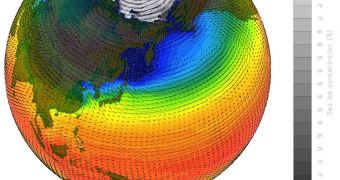A group of federal agencies in the United States, including the National Science Foundation (NSF), has recently awarded a total of $38 million for studying how climate variability and change will affect different areas of the world within the next decade.
The purpose of the overall endeavor is to get a clear picture of how Earth's climate will change around the world, but also at a local and regional level. Until now, researchers have mostly focused their attention on the general, worldwide effects of global warming.
NSF and the other federal agencies that contributed to these funds operate under the joint inter-agency Decadal and Regional Climate Prediction Using Earth System Models (EaSM) program. The NSF Directorate for Geosciences (DGS) provided the bulk of the funding, about $20 million.
“The EaSM projects will expand the limits of our quantitative understanding of the Earth's climate system. They will lead to better ways of predicting climate change,” explains NSF DGS assistant director Tim Killeen.
“The knowledge being developed will lead to improved, science-based decision-making about our common future,” the official adds. He explains that the main goal of all the new studies is to develop next-generation Earth System Models capable of simulating what will happen.
These tools will need to include “coupled and interactive representations of ecosystems, agricultural working lands and forests, urban environments, Earth's biogeochemistry, atmospheric chemistry, ocean and atmospheric currents, water cycle, land and sea ice and human activities,” the NSF reports.
One of the reasons why so many resources have been diverted to this investigation is that the effects of global warming and climate change are beginning to make themselves obvious faster and with more intensity than researchers previously estimated.
Several continents are already beginning to show signs of unusually-long droughts, while precipitation patterns are already starting to change at many locations around the world. These shifts are putting unusual pressure on ecosystems and species, forcing them to adapt or be destroyed.
At the same time, the productivity of agriculture and forests is declining steeply, while permafrosts are melting in arctic regions and the world's oceans degrade and become more acidic. At the poles, ice sheets are retreating very fast, while glaciers are confined only to mountaintops.
All these changes are in turn influencing the global climate in complex patterns, and investigators need to understand how the change occurs.

 14 DAY TRIAL //
14 DAY TRIAL //